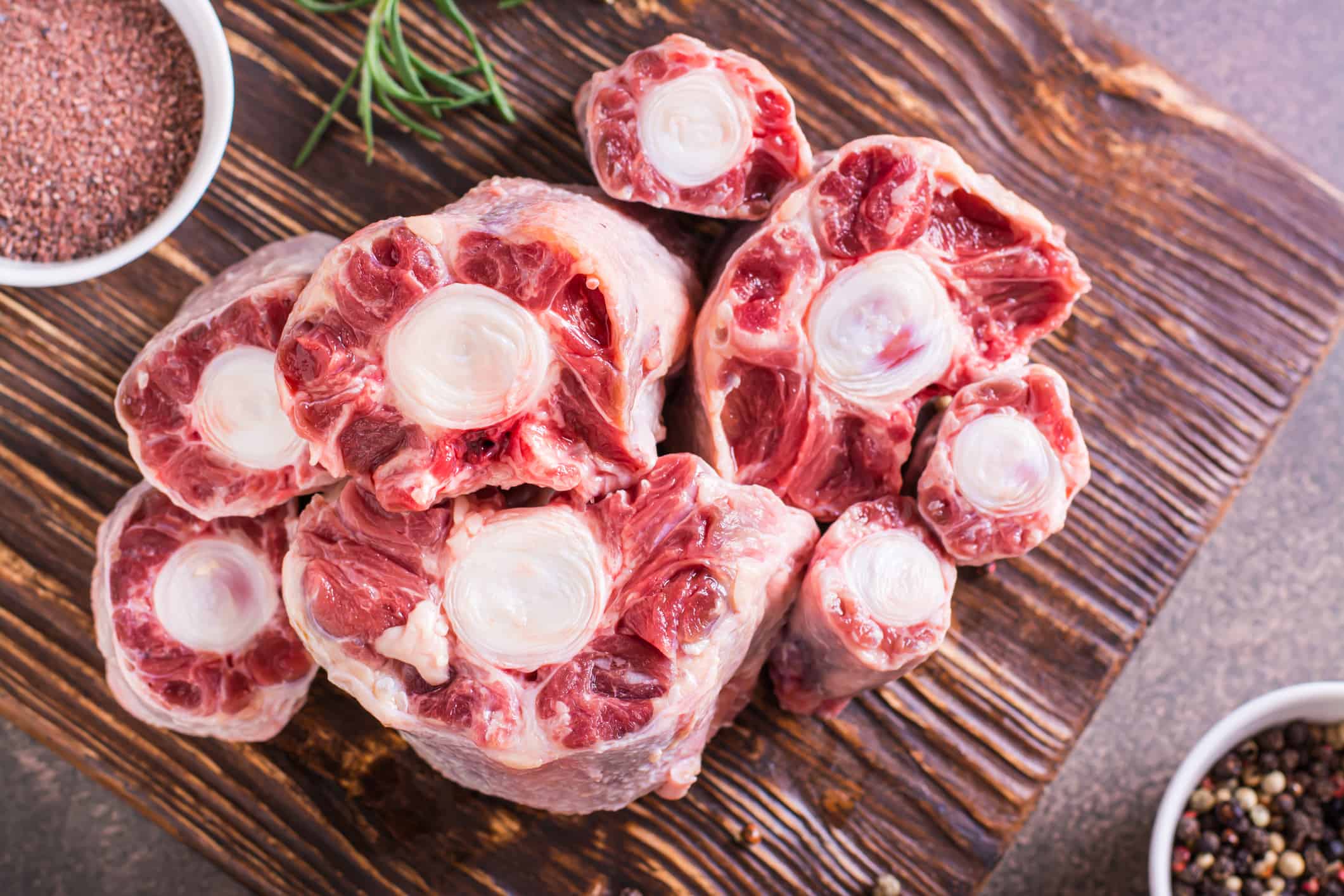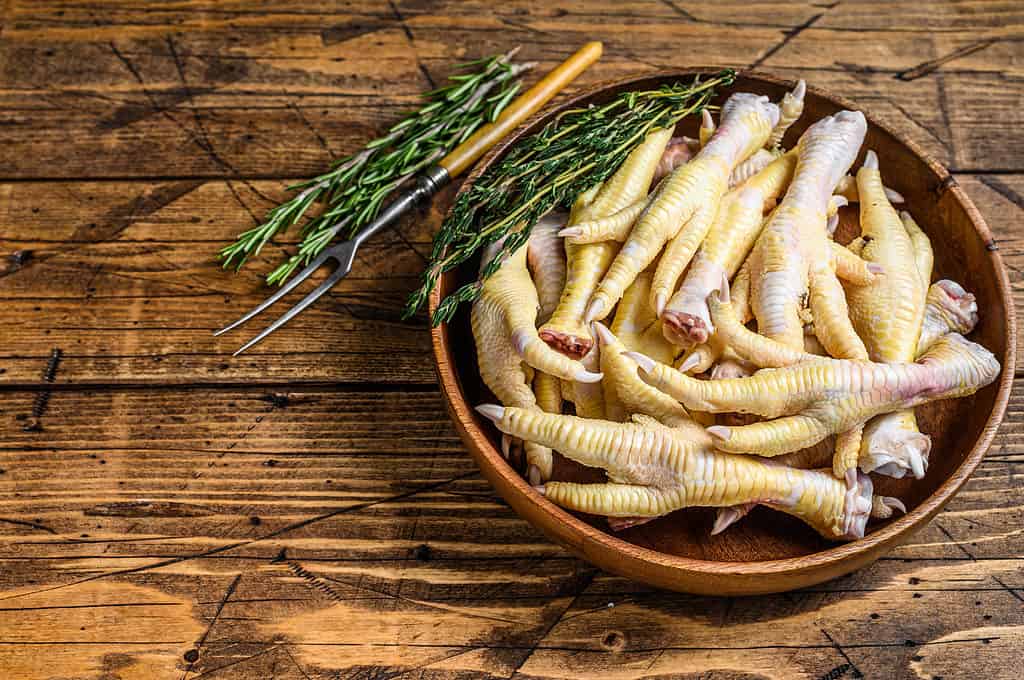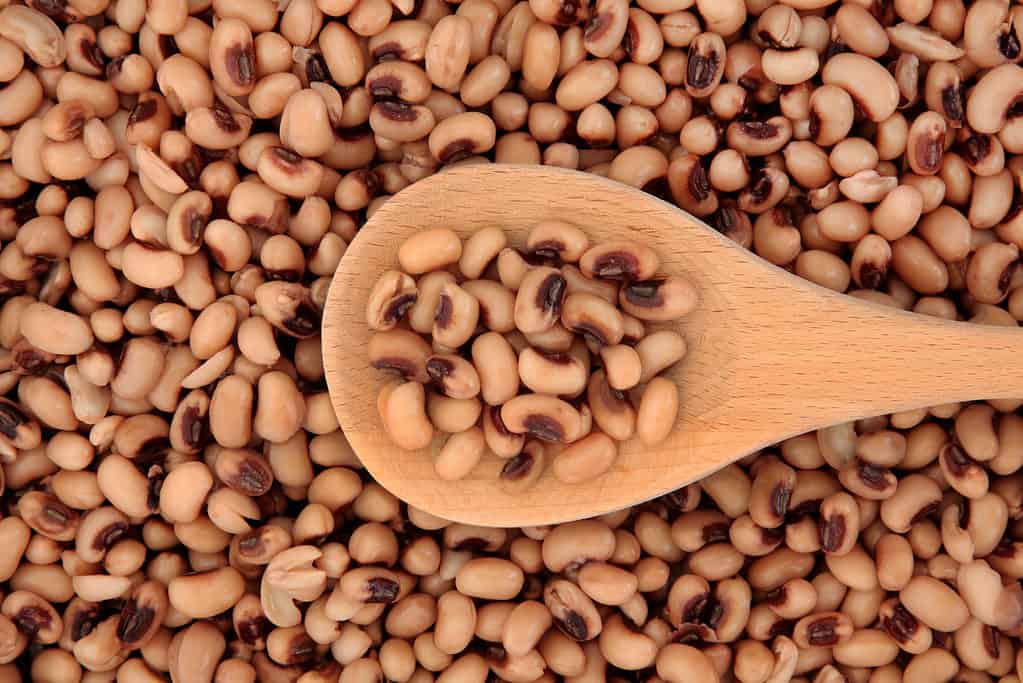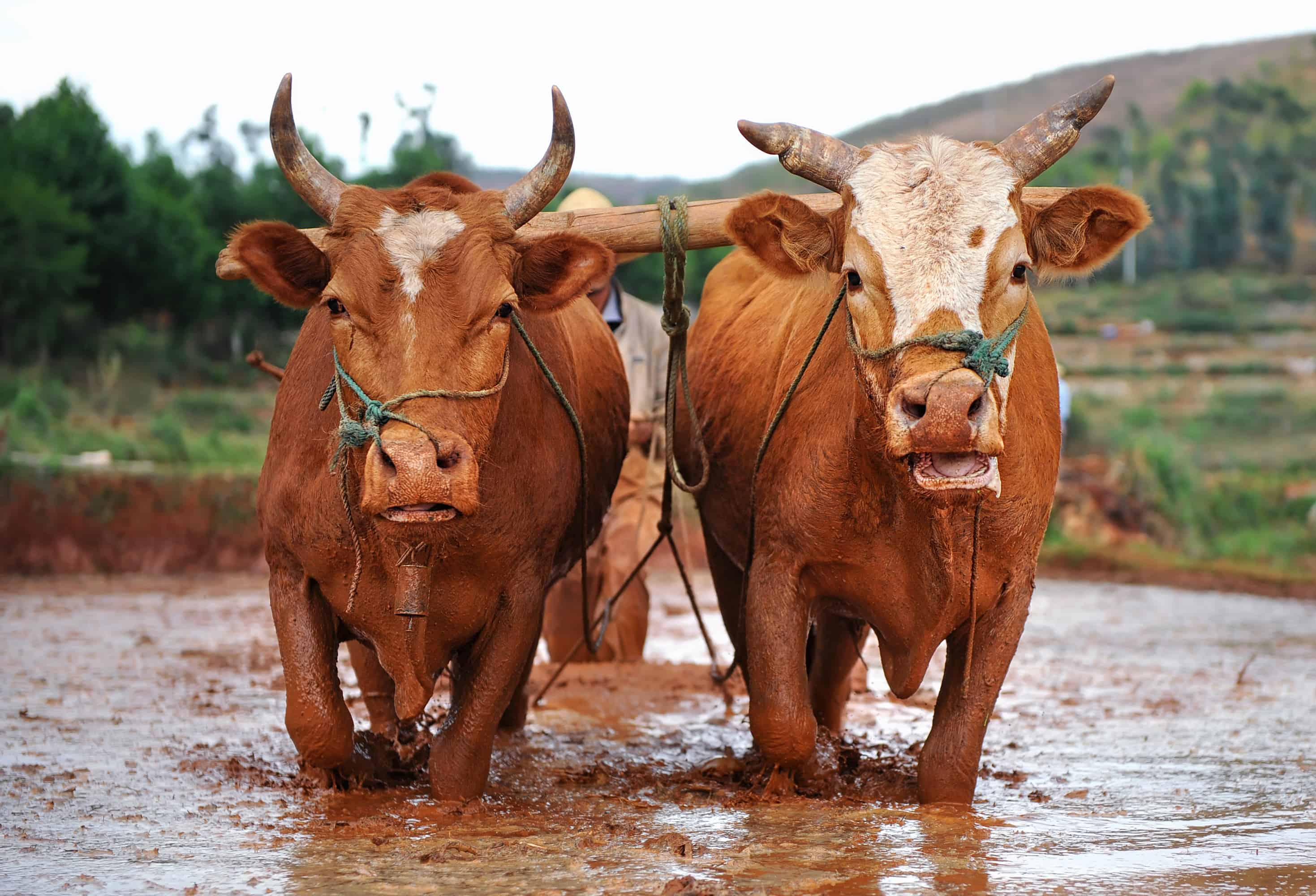Back in the day when food was scarce, no part of an animal could go to waste. The best parts of an animal were reserved for wealthy and higher-class people, while poor and enslaved people had to make do with what they could get.
However, the need to get by with entrails, organs, and scraps that rich folk rejected led to some incredible culinary creations. Oxtail was once considered a throwaway cut, but that is no longer the case.
The culinary practice of cooking with oxtail comes from humble beginnings. Today this cut of meat is a pricey and highly sought-after delicacy that makes some truly mouthwatering dishes. So, what exactly is oxtail?
What Is Oxtail?
Oxtail is a cut of beef from the tail of cattle. In the past, oxtail was only taken from the tail of an ox (as the name suggests). Oxen are typically castrated adult male cattle. However today the term oxtail refers to a cut of meat from the tail of any cattle.
1. Oxtail Is Especially Popular in the Caribbean

Oxtail is a popular dish in the Caribbean and is especially present in Jamaican cuisine.
©snooooxxx/Shutterstock.com
While oxtail is enjoyed throughout the world, it is an especially popular dish within the Caribbean and Caribbean communities in the US.
Jamaica is perhaps the country that utilizes oxtail the most. According to Business Insider, Jamaican oxtail is reminiscent of African one-pot cooking traditions brought to the island by African slaves and maroons as far back as the mid-1500s.
In the United States, two-thirds of immigrants from the Caribbean reside in the states of Florida and New York, as of the 2015-19 period data from the Migration Policy Institute.
Business Insider highlights one restaurant, or rather food truck, that serves up oxtail and other authentic Caribbean cuisine in New York. Island Spice Grill utilizes oxtail and creates dishes such as braised beef and jerk chicken.
2. Oxtail Is an Expensive Cut of Meat

Oxtail was once a throwaway cut of meat, but today it can be as expensive as $14 per pound.
©Elena Rui/iStock via Getty Images
What was once considered a throwaway cut of meat is now an expensive delicacy. In Business Insider’s 2019 article, the outlet noted the price of oxtail as ranging from $4 to $10 per pound. Today the pricetag has only increased for this cut of meat.
Oxtail has gone somewhat mainstream over the past few years, and that only drives up the price for this already expensive cut of meat. Brigid Washington, a journalist, educator, and author of Caribbean Flavors for Every Season, told TODAY.com in a February 2023 article:
Over time, what we’ve found is that oxtail, like most of these provisions which were once relegated to the poor and social lessers became part of a new cultural awareness.”
TODAY
Using data from the USDA’s National Monthly Grass Fed Beef Report, the same article found that oxtail has risen in price to nearly $14 per pound.
3. Oxtail Is Offal

Like oxtail, chicken feet are considered a variety of offal, or the pieces of an animal left over after butchering.
©Mironov Vladimir/Shutterstock.com
No, not “awful.” As we’ve mentioned, oxtail only recently gained the popular status it has today. For many years, oxtail was an undesirable cut of meat.
Oxtail is a class of meat known as “offal.” This term has been used to describe the pieces of an animal that are leftover after butchering, according to TODAY. Offal can refer to a number of animal parts, such as entrails, internal organs, hoofs, and oxtail — which includes the tailbone, marrow, and some meat.
A number of countries use offal regularly in traditional meals. Eater writes that Chinese dim sum menus often offer several variations of chicken feet to choose from. Other dim sum dishes utilize coagulated duck blood and cow tripe laced with shredded ginger.
In Italy, liver and onions are an offal dish that originated in Venice and has spread throughout the rest of the world. Various regions in the country utilize different kinds of offal. In Sicily, spleen and two types of cheeses are the main ingredients in a sandwich known as pani ca meusa, while bovine tripe is commonly eaten in Rome and Florence.
4. Enslaved People Were the First to Cook with Oxtail

Ingredients such as black-eyed peas are a popular choice to use in oxtail dishes.
©marilyn barbone/Shutterstock.com
Oxtail’s use in the culinary world dates back to the beginning of the American slave trade. Culinary historian Adrian Miller explained to TODAY that prestige cuts of meat like prime rib and mutton were reserved for higher-class people, such as slavers.
Offal such as oxtail were given to enslaved people to eat. Over time enslaved people learned to cook using plants and animals indigenous to the region they were forced to live. However, a few crops such as okra, watermelon, and black-eyed peas were transported from Africa to North America during the Middle Passage.
Enslaved people eventually combined West African and Southeastern Native American styles of cooking, using ingredients such as yams, onions, cabbage and collard, mustard, and turnip greens. Cooking oxtail requires a low and slow method, so you’ll often find this meat in some form of stew or soup.
Enslaved people began using the liquid left behind after boiling greens or beans (known as potlikker) to slowly braise oxtail until the meat fell from the bone. Oxtail was also combined with rice, black-eyed peas, and greens, to make a typical Southern oxtail dish.
5. Oxtail Is a Gelatin-Rich Meat

This Potjiekos South African oxtail stew is made with baby gold potatoes carrots and button mushrooms.
©EzumeImages/iStock via Getty Images
Oxtail is a gelatin-rich meat, but what exactly does that mean? The cut of meat known as oxtail contains a high amount of bone, cartilage, and connective tissue, according to The Spruce Eats. It actually contains very little actual meat.
This is why the best way to cook oxtail is low and slow, typically braised in some form of liquid. Slow-cooking oxtail turns the bone and cartilage into gelatin that is rich in flavor and makes a delectable sauce. Though it might sound intimidating and time-consuming, slow-cooking oxtail is well worth the wait.
A number of countries use oxtail in their traditional cuisine. You can easily find recipes for a simple Chinese oxtail soup, which may utilize ingredients such as cabbage, fresh ginger, or Sichuan pepper. The Korean version of oxtail soup, known as kkori-gomtang, is often served with rice or used as stock when making tteokguk (rice cake soup).
6. An Oxtail Typically Weighs Eight Pounds

Oxtail previously only came from oxen. This cut of meat typically weighs around eight pounds.
©Hung Chung Chih/Shutterstock.com
A full oxtail cut typically weighs around 3.5 kilograms (8 pounds). However, the entire cut usually isn’t sold whole. It is instead skinned and cut into pieces to sell at the market. After it is cut, the pieces of oxtail vary in size as the tail narrows toward the end and the center includes more marrow, meat, and fat.
Oxtail is almost always sold by weight. You may need to put in an order ahead of time at your local butcher shop. In the United States, some companies offer the option to purchase oxtail online. Some options include Heartstone Farm, River Watch Beef, and White Oak Pastures.
Summary of 6 Things to Know About Oxtail
| Number | Fact |
|---|---|
| 1. | Oxtail is especially popular in the Caribbean. |
| 2. | Oxtail is an expensive cut of meat. |
| 3. | Oxtail is offal. |
| 4. | Enslaved people were the first to cook with oxtail. |
| 5. | Oxtail is a gelatin-rich meat. |
| 6. | An oxtail typically weighs eight pounds. |
The photo featured at the top of this post is © Vladimir Mironov/iStock via Getty Images
Thank you for reading! Have some feedback for us? Contact the AZ Animals editorial team.







